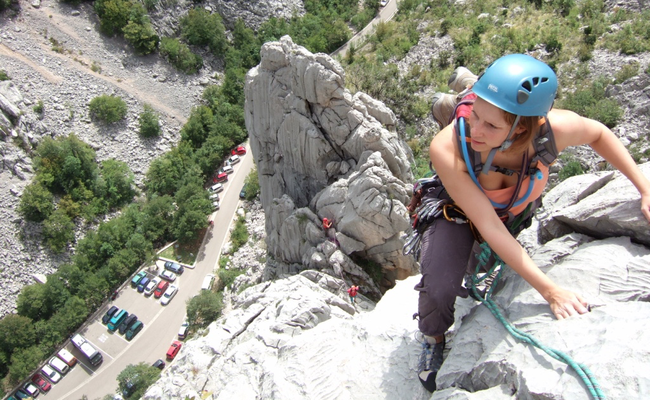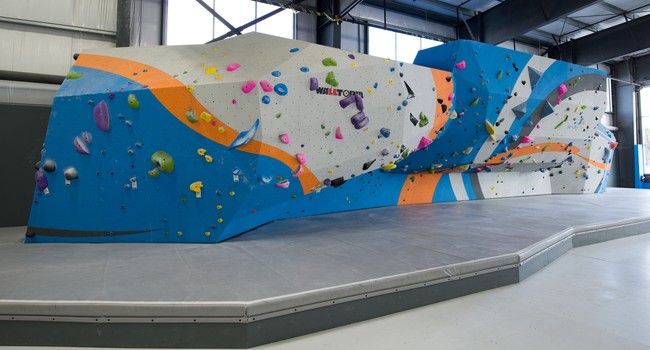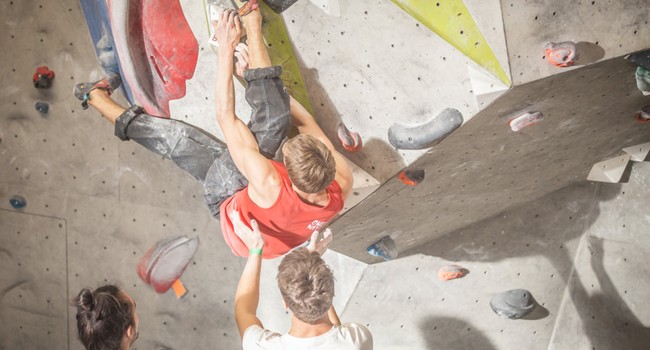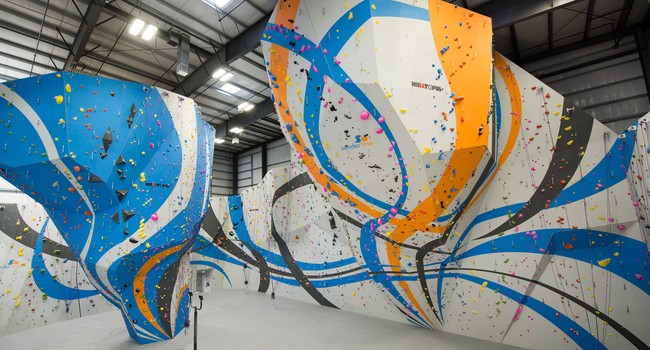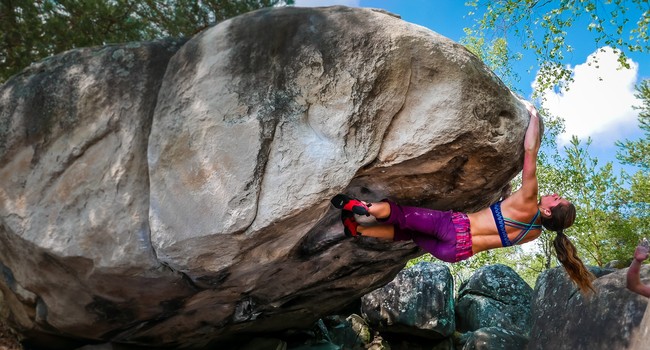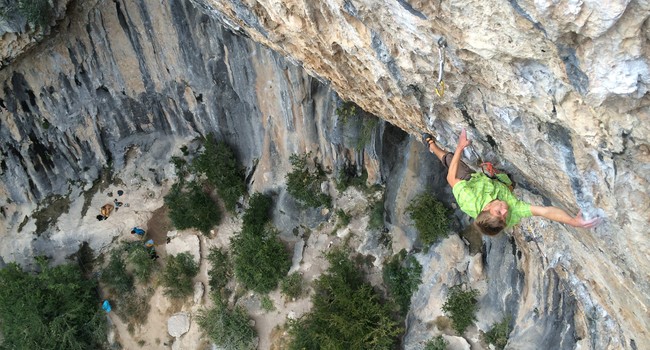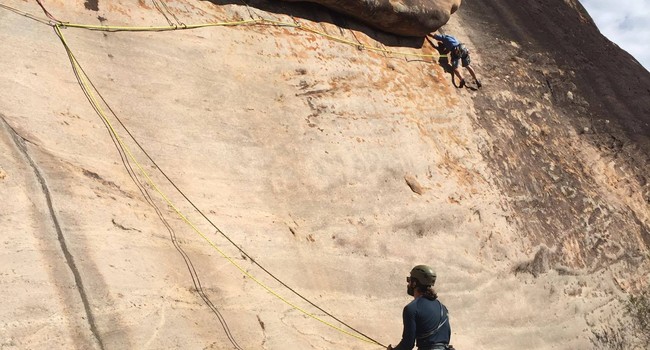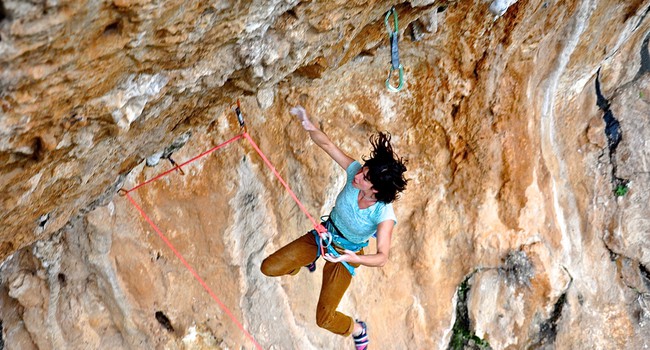欢迎来到攀岩社群,欢迎访问世界上最大的攀岩资讯平台——theCrag。 如果您刚刚接触攀岩,希望尽快了解攀岩的常见类别、装备、所需能力和常见术语,阅读本页就对了。同时,如果您希望进一步探究某些话题或相关资源,这篇简介会为您指引方向。这篇简介并非包罗万象,也无法代替攀岩向导或教练的工作。但我们希望它可以帮助您开始攀岩,乐于加入这个不断发展的社群。 攀岩是有趣且有回报的锻炼项目,而且比想象得更容易入门。
攀岩运动的历史回到顶部
在中国发现的公元前200年的岩画有对攀岩的描绘,这是目前已知人类最早的攀岩记录。在欧洲和其他地方,攀岩更多被用于登山、狩猎和“忙忙碌碌寻宝藏”。19世纪后期的欧洲,使用装备作为攀登支点的器械攀岩引领着攀岩成为了一项独立于登山的新运动。20世纪下半叶,自由攀登(攀爬者使用手脚抓踩岩壁攀登)和其他类型的攀岩(详见后述)逐步发展了起来。
攀岩的人通常独自行动,或与三两好友相约同行。多数攀岩者很年轻(39%的攀岩者不足18岁),但攀岩的运动生命可以长至60岁以上。根据 IFSC 2016年估算的数据,全球有2500万人规律性地参与攀岩运动,而平均每天有3千人开展自己的攀岩初体验。
天然岩壁的攀岩线路通常由官方的登山俱乐部或志愿团体开辟,您通常可以从他们那里得到攀岩线路的第一手信息。
Climbing presents us with endless opportunities to chase the flow, the high, the rush. And success is never guaranteed. Add in all the other wonderful payoffs we gain through climbing and it is no surprise so many of us are addicted (Jeff Elison)
人们从事攀岩的目的多种多样:可能是为了娱乐身心、强身健体、赢得奖金或增加社交。也有极少数的攀岩者是职业攀岩运动员————他们以从事这项相对冷门的运动为生。世界各地有许多地区性、国家层面乃至国际级的攀岩比赛,IFSC世界杯是其中最引人注目的。从东京2020开始,攀岩成为了奥运会的正式比赛项目。
攀岩的分类回到顶部
刚接触攀岩的时候,新人们通常对攀岩的诸多分类感到迷惑。我们在这里为您解释最常见的几个类别,其他部分将留给您在以后慢慢了解。人们会以几种不同的角度来把攀岩的分类。我们首先按照活动的环境,将攀岩分为室内和户外两部分。
室内攀岩回到顶部
室内攀岩或岩馆攀岩是一项比较年轻的运动,最初它只是作为户外攀岩的一种训练形式而存在。但如今,室内攀岩的参与者远多于户外攀岩,攀岩馆已经成为人们接触攀岩运动的主要途径。与野外攀岩相比,攀岩馆的攀爬环境更加可控、交通便利、无季节限制、装备门槛更低。于是,攀岩馆也成为很多人练习攀岩的不二选择。2007至2012年间,全球的攀岩馆数量暴增了50%。在美国、德国、日本等国家,分布着大大小小数以百计的攀岩馆,使得多数人都能在自己的日常生活区域里找到攀岩馆。
通常来说,在攀岩馆可以练习两种类型的攀岩:攀石(旧称抱石)和运动攀。一些攀岩馆专注其中一项,也有很多攀岩馆能同时开展这两项运动。此外,有时一些攀岩馆还可以练习速度攀岩等其他类型的攀岩,在此暂不赘述。
室内攀石回到顶部
攀石是一项无需绳索保护的攀岩项目,因此攀石的岩壁相对较矮,以保证攀爬者能安全地跳回地面。室内攀岩馆通常在攀石墙下面铺设软垫以提供落地时的缓冲。室内攀石的流行得益于它独特的优势:攀岩者无需寻找保护员即可独自训练(虽然和朋友一起去攀岩会更有趣,但你也可以在攀石馆交到志同道合的新朋友);需要的装备简单:仅需一双攀岩鞋(通常可以在攀岩馆租用)和粉袋(不必须);线路较矮,对畏高人士更加友好。
从攀爬的角度来说,攀石让人们无需担心保护和绳索操作,从而更专注于攀爬动作。因此,人们在攀石时通常可以爬得更难,进步得更快。人们可以专注于克服技巧和体能的弱点,因此攀石训练也可视为运动攀登的有益补充。
室内运动攀岩回到顶部
Sport climbing is what many people mean when they say climbing. Indoor sport climbing means climbing routes with a rope either in lead (meaning you clip the rope in protection points using fixed quick draws while you climb higher) or top-rope (meaning you are protected from falling by a pre-installed rope). Depending on the gym, you might find routes with pre-installed ropes for top-roping and/or routes for lead climbing. Of course you can always install a rope (or have someone else do it) and top-rope a lead climb (see also 打卡类型 for more details on ascent styles). The height (or length) of indoor sport climbs depends obviously on the gym but are typically between 10 and 30 meters and vary from slab (positive angle, less than vertical) to steeply overhanging routes (negative angle, steeper than vertical).
Indoor sport climbing requires a partner you can rely on for belaying (protecting you from falling to the ground) and more equipment than indoor bouldering. Climbing shoes, a harness, a belay device and, if you want to lead, a rope are required but typically most of it can be rented in a gym. Check your local gym for beginner courses or find a reliable and experienced partner to start sport climbing.
Outdoor climbing回到顶部
Outdoor is where the climbing sport has its roots and being outdoors and in nature is one of the many reasons people enjoy climbing. Fewer people start their climbing career outdoors than indoors but there is no reason to not get started outdoors. Find a climbing or alpine school and check out if they offer beginner courses or introduction days for novices, it will be a very enjoyable and exciting time! Outdoor climbing has more disciplines than indoor climbing, but some aspects overlap. Here we distinguish between three major outdoor climbing disciplines but keep in mind, that there are a few more like Deep Water Soloing (DWS), Ice Climbing, Aid Climbing and Free Soloing:
- Bouldering
- Sport Climbing
- Traditional Climbing
Outdoor Bouldering回到顶部
As outlined for indoor bouldering, bouldering is climbing without rope at heights that typically allow you to safely jump down back to the ground. Obviously bouldering outdoors means that you need to make sure that the landing area is safe. This is typically done using so-called crash-pads that are placed in a way to make sure you land on them and a fall is safe. In outdoor bouldering it is also highly recommended to have “spotters”, one or more people that guide your fall to the ground and ensure that you land and stay on the crash-pads. Contrary to some beliefs, a spotter is not there to catch you but to assist you in your fall and ensure a good and safe landing.
Bouldering does not require big cliffs or endless boulder fields, you can have fun for a long time on a boulder in your backyard. That being said, you will find tons of boulder areas on theCrag, including the famous ones like Fontainebleau in France, The Rocklands in South Africa or Bishop in the USA.
Outdoor Sport climbing回到顶部
Sport climbing involves climbing routes that are equipped with fixed protection such as pre-installed bolts and anchors. Routes can be either single-pitch (the route length allows you to go to the top and back to the ground with your rope, the belayer stays on the ground) or multi-pitch (once the first climber has reached the top of the pitch, the second climber follows them to the anchor from where they climb the next pitch and so on. This allows you to climb long routes).
Outdoor sport climbing requires an experienced and reliable partner and at a minimum climbing shoes, harness, belay device, rope and a number of quickdraws to clip into the pre-installed protection. A helmet is recommended.
Most, if not all, outdoor sport climbing areas are developed by enthusiastic individuals using their spare time and own money to put up access to the cliffs, bolt the routes (drill in the protection) and - hopefully - maintain the quality and safety of the installed equipment over time. Information about climbing areas and routes can typically be found in printed guidebooks (so-called topos) and of course here on theCrag where this information is supplemented by ascent information provided by our users.
Traditional climbing回到顶部
Traditional climbing (also called trad climbing) involves climbing of routes in which protection against falls is placed by the climber while ascending. In some cases trad routes have fixed anchors that you may use to get back to the ground or even individual pre-installed protection (bolts), in which case it is called a mixed route. As for sport climbing, these routes can be either single- or multi-pitch routes. Trad climbing requires the same basic equipment as sport climbing but of course you also need the removable protection devices. The most common ones are called friends and nuts (which come in many different sizes) but many more exist. Trad climbing requires more experience than sport climbing, as you also have to place the protection (gear) while you climb. As for sport climbing, you will find information about trad climbing areas and routes in printed guidebooks and here on theCrag.
Climbing difficulty回到顶部
It won't be long and you will be faced with a discussion about the difficulty of a route - indoor or outdoor, bouldering or sport climbing. Even though most climbers climb for the fun of it, it seems to be human nature to measure your own progress and compare yourself to your peers using a more or less suitable system. In the climbing world - with all its variety - the rating or grading of a climb is done using so called difficulty grading systems. As you can imagine, there are many different grading systems, some by discipline but most by area (e.g. different systems in different countries). theCrag handles and converts all of them and if you are interested you can read more about them in the 难度体系和难度换算 article. The basic principle of all difficulty grading systems is, that the harder a climb, the higher the number. This means that in French scale a 6a is harder than a 5b or in HUECO-scale a V8 is harder than a V6 and so on.
How difficult a climb actually is is determined by many factors such as steepness of the route, size and quality of holds, the distance between holds, the difficulty of the movements to reach the next hold, how sustained a route is and so on. Obviously, grades have a subjective component and what feels hard to one person might feel less so to another. theCrag allows you to record your impression and grading of a route which will provide evidence to how close the 'assigned grade' to the true difficulty of a route. If you are interested in your personal progress we strongly recommend to read the article on 攀登表现评分系统(CPR) - a tool that allows you to monitor your personal progress over time implemented on theCrag.
Climbers are just big kids who haven’t lost touch with our evolutionary roots (Jeff Elison)
Climbing equipment回到顶部
When you enter a climbing equipment shop for the first time you are probably overwhelmed by the amount of different equipment (often called gear) and variants thereof. In this chapter we will just briefly touch on some of the most important equipment you might need when you start climbing. You will find out for yourself later what else you might need, as it heavily depends on what disciplines you prefer, what equipment your partners have and what your personal preferences for climbing are.
Climbing shoes回到顶部
Climbing shoes are probably the first thing you would like to buy when you start climbing. Not everyone likes to put their bare feet in rented shoes for long. The choice of climbing shoes is almost endless. Many different brands offer different models, each targeted at different climbing styles and foot shapes. And then there is the question of size, a topic discussed at length. Typically, climbing shoes are of a smaller size than your normal street shoes in order to improve sensitivity towards foot placements. This tightness may also lead to pain and often it takes a while to get used to your shoes. For beginners we recommend the use of tight but comfortable shoes, you will not climb at the technical limit of a shoe that fits you reasonably well and it is more important that you enjoy the climbing without pain than being able to stand on the smallest rock feature. Over time you will identify the brand and model that fits your foot best and maybe you will have more than one pair of shoes e.g. one for long, multi-pitch climbs and a different one to go bouldering or to do technical climbs. As a start it is best to go to a climbing gear shop with a small “shoe test area” and find out what shoe and size you feel comfortable with.
Harnesses回到顶部
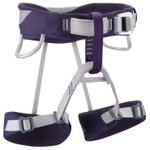
Chalk and chalk bags回到顶部
Chalk (a finely ground form of magnesium carbonate) is used as drying agent to minimise sweating of your hands and is used for almost all forms of climbing. You typically buy it in plastic bags and then fill it into your chalk bag. Chalk bags are either strapped around your waist (or attached to your harness) for sport and trad climbing or “hand bag style” and placed on the ground for bouldering. Due to excessive chalk dust some gyms do not allow the use of “loose chalk” but recommend the use of chalk balls (where the chalk is inside a tissue) or liquid chalk (chalk suspended in an easily evaporating liquid that is applied to your hands) instead. Chalk bags come in all shapes and colours.
Belay devices回到顶部
Probably no other piece of equipment is as important and offers as much choice as the belay device. For a long time a carabiner and the use of the munter hitch were the method of choice for belaying. In the last few decades a multitude of different belay devices have entered the market. Some of them disappeared again, others seem to be here to stay. The choice of belay device depends on your plans and of course on your preferences. If you plan to climb multi-pitch routes with either double- or twin-ropes you have different requirements compared to only climbing with a single rope. A good approach to distinguish single rope belay devices is to distinguish between auto-blocking devices and manually blocking devices. Auto-blocking devices block the rope automatically when the climber falls, whereas manually blocking devices require the belayer to respond. The most famous auto-blocking belay device is the GriGri (by Petzl) but there are many others achieving the same thing with similar or different technical solutions. Be sure to read the manual, practise the use of the device with an experienced climber and always stay alert - even when using an auto-blocking device - when belaying your partner. Always check your partner’s belay device and have yours checked before embarking for a climb!
Ropes回到顶部

Helmets回到顶部
If you climb outdoors you should consider buying a specialised climbing helmet to protect yourself from falling rocks or equipment or head injuries from crashing into rocks when falling. We hope you don’t need it but depending on the quality of rock and if you venture into multi-pitch climbing it is strongly recommended to wear one when climbing and belaying.
Quickdraws回到顶部
Quickdraws (also called draws or QD’s) are two carabiners linked by textile webbing and are used to clip your rope into pre-installed protection such as bolts. As such, their main use is in sport climbing. Often, one of the carabiners is held in place by a piece of rubber in the webbing to make it easier to clip in the rope while the other carabiner (clipped into the bolt) can move freely. Quickdraws come in many shapes, sizes and colours and with webbings of different length to accommodate different requirements while climbing. For beginners it is often enough to have one set (depending on your climbing area and length of routes you might need 10 to 15) of quickdraws and complement them later with different types and models as your climbing evolves.
Crash pads回到顶部

Protection gear (cams, nuts)回到顶部
In this article we mention protection gear for trad climbing just for the sake of completeness. The choice and options are plentiful with friends and nuts as the most common protection devices. Cams (also called friends) are spring-loaded camming devices that can be put into pockets and cracks and expand as you loosen the spring whereas nuts are asymmetrically shaped pieces of metal than can be inserted into cracks. Have a look at these and other devices in your climbing gear shop, we are sure you will like them!
Of course there are loads of other bits of equipment you might want to get, from slings to carabiners, belay glasses, a clip stick, knee pads, daisy chains and many more. You will find out what you need once you get more experience and know what form of climbing you prefer. And then there is always this new thing that just came out and everybody wants to have…
Abilities required回到顶部
Now that you know about the major climbing disciplines and equipment you might wonder what physical requirements there are and which other abilities you should have or acquire. Let’s start with some of the practical abilities.
Practical abilities回到顶部
A key ability for rock climbing - unless you are only bouldering - is the ability to tie certain knots. There are whole books and some well done apps explaining how to tie the dozens of different knots that you might want to use. We just mention three important ones, that you should be able to tie any time without having to think about it. The retrace figure eight to e.g. tie yourself into the rope or connect two ropes, the prussic as safety when rappelling or when you want to climb up on a rope and the munter hitch for belaying when e.g. you forgot or lost your belay device. Practise them at home and ensure you know how they look. Always check your partner’s tie-in knot and have yours checked before climbing (partner check).
Physical abilities回到顶部
As for physical abilities, you might be surprised to hear that there are not really any required. Obviously climbing is a physical activity but because there are so many different disciplines and because you can and will have fun on any level, climbing is really open to everyone. If you practise climbing you will soon realise how fast you progress and how much fun it is to see and experience that. You will improve your technique and you will get physically stronger (mostly your arms and upper body). Flexibility is a plus if you have it but it is not a prerequisite to climbing. Climbing can also be practised by people with disabilities and there are even competitions in para-climbing. Size, weight, strength - it really doesn’t matter - simply enjoy this awesome sport!
The best climber in the world is the one having the most fun (Alex Lowe)

